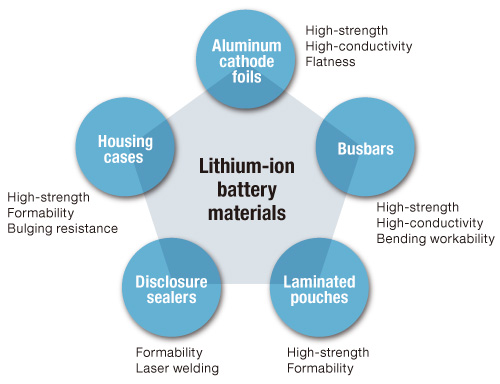Factors that Contribute to the Long shelf life of Li Ion Battery Materials

Lithium-ion battery technology is a huge leap forward towards electrifying the drive-train and ensuring stationary storage solutions. It helps in enabling the effective use of renewable sources of energy. Power tools and consumer electronics are low power applications for which this technology is used.
The technology for manufacturing Li ion battery materials has reached a much higher stage following extensive research and development work. The stage is highly conducive to the creation of reliable and safe lithium ion batteries. Such materials are bound to be used with electric vehicles and hybrid-electric vehicles that are supportive of windmills and solar cells.
Check Out the Most Important Li Ion Battery Materials that Are in Use:
- Cathode Materials
Among the most researched materials for manufacturing li ion batteries, you have the layered oxides bearing nickel and cobalt. In spite of being stable in the high-voltage category, cobalt doesn’t support mass manufacture due to its toxic nature and limited availability.
Manganese yields an inexpensive replacement alternative due to restricted cycling behavior, great rate capabilities, and high thermal threshold. Much of the drawbacks in the production of li ion battery materials are minimized by combining the rich properties of a perfect blend of manganese, nickel, and cobalt.
- Anode Materials
Anode materials comprise silicon, lithium-alloying materials, graphite, inter-metallics, and lithium. Lithium is the key material that works in a straight-forward manner. However, it bears the risk of short-circuiting due to its conflict with dendritic development and cycling behavior. The easy accessibility and cost-effectiveness of carbonaceous anodes have made them a very popular anodic material.
Other Materials for Manufacturing Li Ion Batteries That Can Help As Well:
- Electrolytes
A powerful electrolyte needs to be in place if you want a robust and safe battery that lasts for long. Besides ensuring high mobility of lithium ion, a long shelf-life is also important for a li ion battery. The materials for manufacturing li ion batteries need to withstand high temperatures and sustain high voltage. Solid-state, polymer, and liquid electrolytes are among the most known electrolytes that are in use.
Polymer electrolytes are conductive ionically. They are frequently combined with the ceramic nano-particles and can produce resistance towards high voltages and much higher conductivity.
Apart from this, polymer electrolytes could be teamed with lithium metal anodes as they can inhibit lithium dendrites from expanding. Solid electrolytes constitute ceramic glasses and lithium-ion crystals that are conductive. Solid electrolytes need specific temperature treatments and conditions that are conducive to deposition.
- Separators
Separators keep the two electrodes separated from one another. It helps in preventing short-circuit. The separators comprise of foam materials that the electrolyte soaks and holds firmly in place. It must comprise of an electronic insulator and maintain chemical resistance towards wearing down within an environment that is active electrochemically.
It must also maintain mechanical stability and minimum electrolyte resistance. Alongside this, it must possess a safety feature known as “thermal shut-down”. The lithium gets restricted as the separator melts and shuts the pores at high temperatures.
Composite materials bearing nano-scaled and micro-particles are the outcomes of increased efficiency to manage an inevitable change in volume and an increase in performance caused by the efforts in the manufacturing and processing of li ion battery materials.
